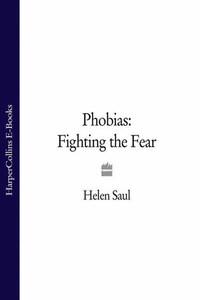While working on this book, I was often asked which phobias I was writing about. The question initially puzzled me – my intention was always to write about all phobias – though it does perhaps reflect the common but unhelpful assumption that each phobia is a distinct problem with a distinct cause and treatment. In fact, the root causes of fear could apply equally to triskaidekaphobia (fear of the number 13) or gephyrophobia (crossing bridges). This book is intended to be less a self-help book than an exploration of the ideas and thoughts driving progress in the laboratory and the clinic. Everyone with a phobia knows what it is to fight fear and I only hope this book properly acknowledges their courage. But it aims also to focus on the way doctors and scientists are improving our understanding and fighting fear on their behalf.
I am a freelance science and medical journalist and have worked variously in TV, radio, newspapers and magazines. I have no specialist training in phobias, other than a degree in medical sciences. I have never had a phobia or received treatment. My involvement with phobias began in the autumn of 1993 while I was working at New Scientist. The then features editor, Bill O’Neill, received a dossier on the subject from a remarkably well-informed former agoraphobic, Mary Dwarka (whose story is told fully in chapter 9). She had researched her own condition in huge depth and was suggesting that New Scientist run a feature on agoraphobia. Bill was somewhat perplexed by the range of science and arguments in Mary’s work and asked me to look through it to see whether I thought there was enough in the subject to make a feature.
There was more than enough. Enough for a book, I later discovered. At the time, I spoke to a couple of people with experience of phobias and a variety of scientists working on the subject, some suggested by Mary. The resulting feature was optimistic in tone, concentrating on the great advances in our understanding and how they are already translating into new treatments in the clinic.
It sometimes seems that the more one knows about phobias, the less clear everything becomes. Ask members of the public what a phobia is and they will tell you about extreme reactions to spiders or heights. Many will reel off an anecdote about someone they have known with a bizarre fear. And, of course, these are phobias. But as one delves further, boundaries seem to disappear. Where does normal protective fear turn into a phobia? What is the link between generalised anxiety and phobias? Or between panic disorder and panic attacks and phobias? When is agoraphobia a true phobia and when a consequence or the cause of depression? What about avoidance disorders, alcoholism, some personality disorders? Where does phobia end and psychiatry begin? Entire libraries could be devoted to the subject.
Equally, when you ask specialists, they very often produce good clear answers. But ask four professionals in different disciplines and you will be lucky to hear the same thing twice. The amorphous mass of phobia research needs to be simplified for us to get anywhere. Specialists emphasise different aspects, and while none is entirely wrong, none is entirely right either.
This book is an attempt to represent many different points of view. I have chosen to focus a chapter on each approach. Readers may find that some strike a chord while others seem less relevant. Where previous books on phobias have focused on a single approach, this attempts to be an unbiased account of all the advances in all the major schools of thought dealing with phobias.
John gazed out of the window in private joy. Normally reticent, he grinned broadly at the beauty of the scene. A perfectly round orange sun sat above a plain of clouds but that was not the reason. After years of fear, John was sitting for the first time in an aeroplane.
Other passengers were more obviously excited – not exactly unruly but in exceptionally high spirits. They had come through against all the odds and were laughing with their fellow heroes. Triumph, infused with slight hysteria, prevailed. They slapped each other on the back, charged around kissing and shaking hands with near-total strangers, and one or two cried.
The crew encouraged the party atmosphere, urging passengers to take off their safety belts and walk around. Boisterous adults queued to see the flight deck. Cameras clicked. The aeroplane buzzed with laughter. There were cheers as the plane went through the clouds. Cheers for Mr Evans who had just celebrated his eighty-fifth birthday. Cheers for the pilot, cheers for passengers, cheers for any reason anyone could think of.








